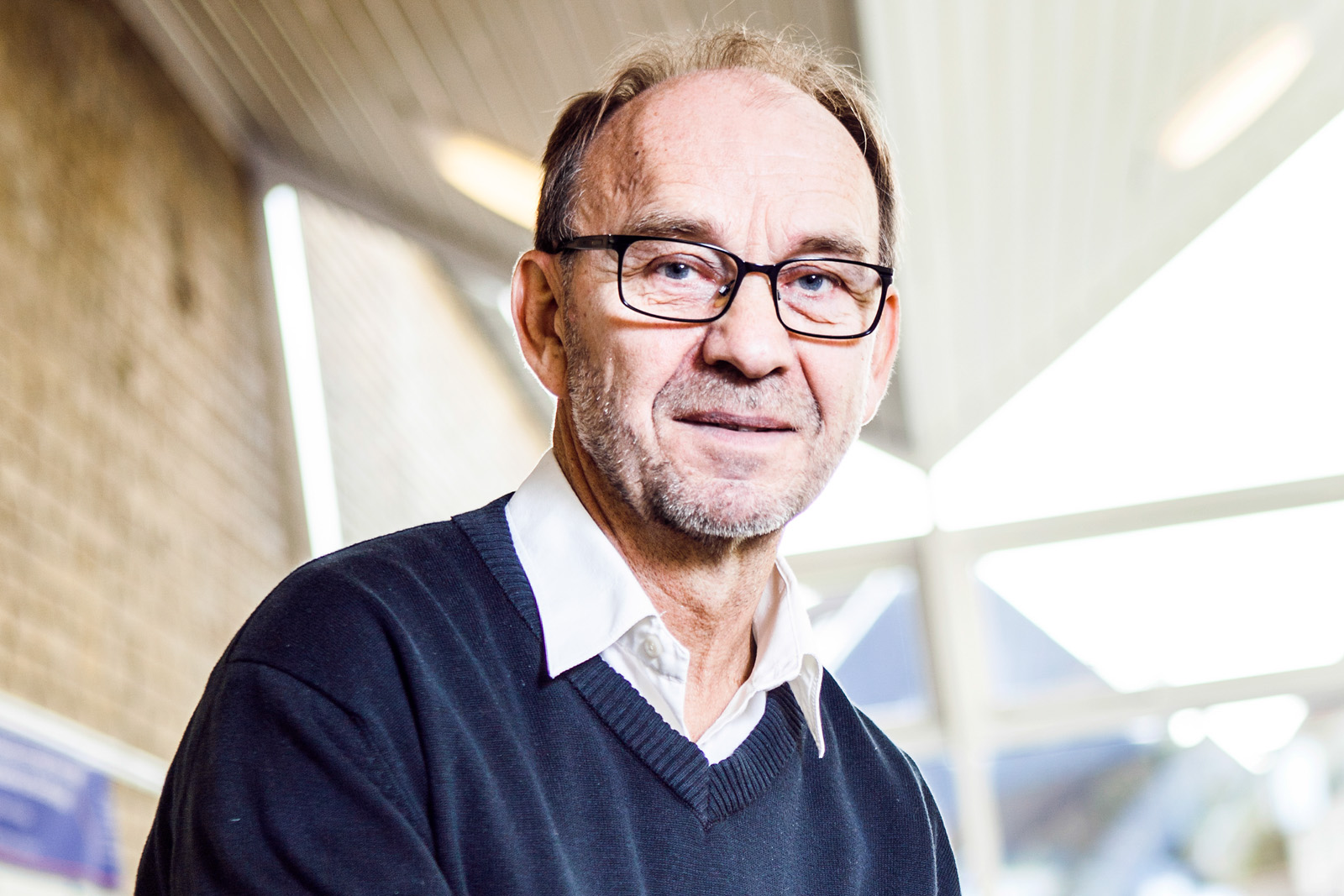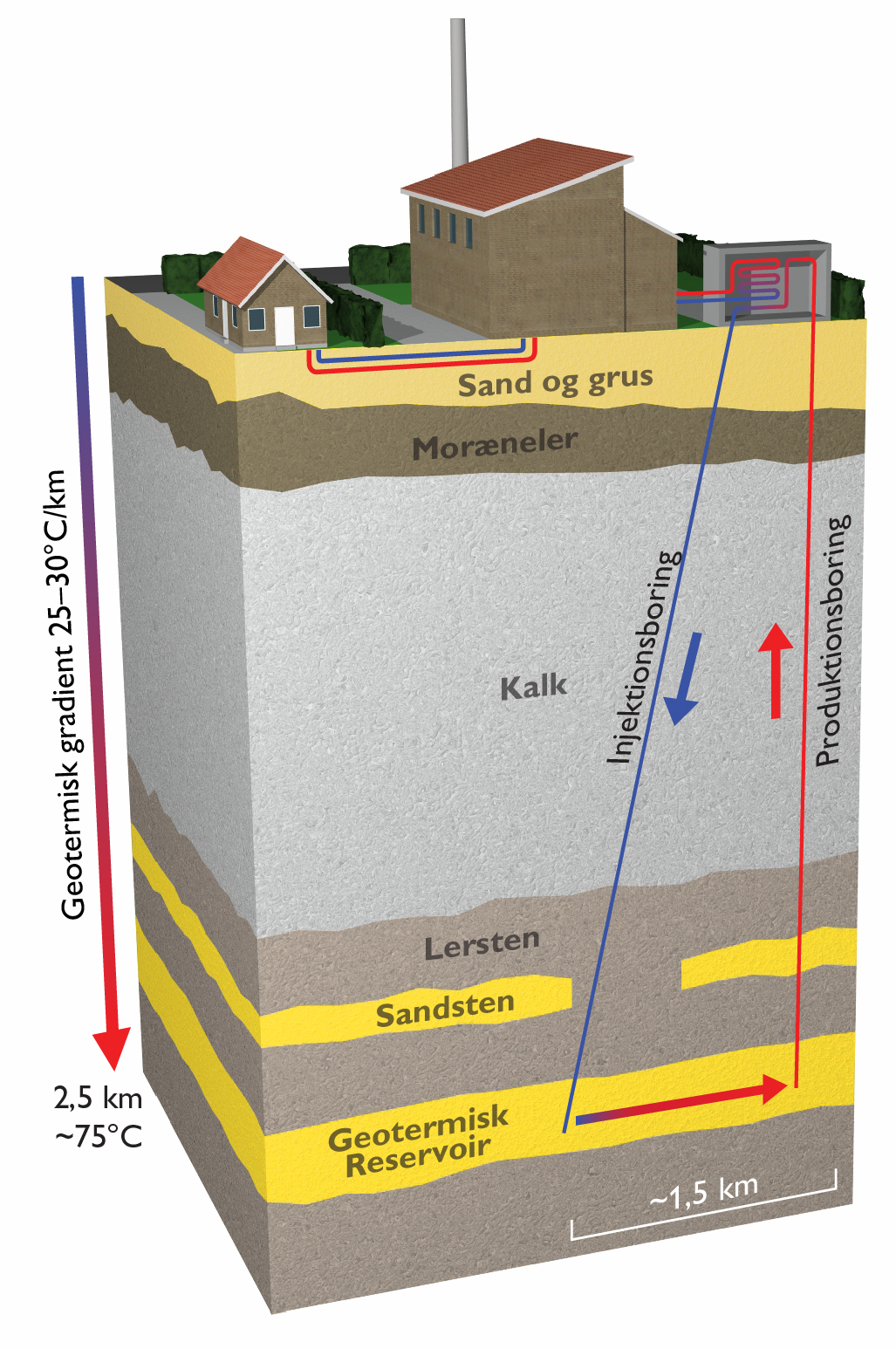Geoscience will pave the way for ‘green’ heat from the subsurface
The Danish subsurface contains enormous amounts of heat energy. Innovation Fund Denmark has granted DKK 17 million to a new project with the participation of researchers at the Department of Geoscience, which will pave the way for exploiting this resource on a large scale, and contribute to the green transformation of the Danish heat supply.


It is a political goal that sustainable energy will contribute with 50 per cent of Denmark’s energy supply by 2030. Geothermal energy can come to play an important role as a supplement to solar, wind and biomass energy. The source is hot water of 50–80 degrees in the sandstone reservoirs in the subsurface, found at a depth of more than 1 and almost 3 kilometres.
Three small geothermal heating plants have been established in Denmark to date, located in Thisted, Copenhagen and Sønderborg. A number of projects have been under way, but have been suspended due to varying degrees of geological, economic and technological uncertainty. The GEOTHERM project focuses on reducing these uncertainties.
Behind the project is a consortium of experienced research groups in Denmark and abroad, selected private companies, heating utilities, and the three Danish geothermal heating plants. The project combines for the first time geology, technology and heat supply by analysing the full life cycle of geothermal plants.
Advanced seismic methods
“We’re really pleased that we managed to secure this project,” says Associate Professor Niels Balling, Department of Geoscience, which has been one of the driving forces behind the project along with the Geological Survey of Denmark and Greenland (GEUS). “We’ve come a long way in previous research projects in understanding where the geothermal reservoirs are located around the country, and we’ve made regional models of the subsurface temperature. The new project will make it possible to study the specific utilisation options to a greater extent than previously. This will partly take place by boosting collaboration with industry and the district heating sector,” he points out.
Professor Søren Bom Nielsen is head of the department and he is also pleased. He stresses that the project is fully in line with the department’s emphasis on research and education concerning environmentally responsible, sustainable utilisation of nature’s resources.
In collaboration with GEUS and Qeye Labs – a private Danish geophysical technology company – geologists and geophysicists at the Department of Geoscience will work with some of the most advanced seismic methods used to find oil and natural gas. These methods will be analysed and developed so they can also be used to find the most suitable locations for exploiting the geothermal resources.
Hot water from wind turbines
Calculations will also be made of the amount of energy that can be brought up from the subsurface in specific areas, and the best possible way to use the energy over a long period of time.
“We’ll also make models of how heat energy such as heat converted from surplus wind turbine power can be stored in deep geological reservoirs and used in combination with geothermal energy,” says Associate Professor Balling.
He will work on the project together with Associate Professor Ole Rønø Clausen and other colleagues at the Department of Geoscience, where funds have also been allocated to PhD students and postdoctoral fellows.
For more information, please contact
Associate Professor Niels Balling
Department of Geoscience
niels.balling@geo.au.dk
+45 8715 6349 / mobile +45 2140 7643
